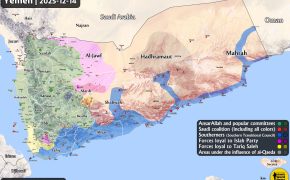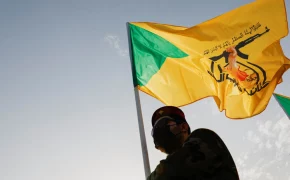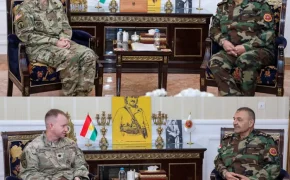A Review Of Thar Al-Ahrar Op. And Lack Of Success By Islamic Jihad


The new round of clashes between the Israeli army and Palestinian resistance groups kicked off on May 9 following the assassination of three senior commanders of the Al-Quds Brigades. The confrontations lasted for five days, but given the experiences of the previous defensive operations by Palestinian fighters, in the recent clashes, the Israeli regime’s army had the upper hand and the Palestinian resistance groups were not able to dictate their conditions to the opposite side.
On May 9, Israeli fighter jets conducted air strikes on the houses of commanders of the Al-Quds Brigades, which is the military wing of the Islamic Jihad movement in the Gaza Strip, with the use of precise data. As a result of the military aggression the Israelis martyred three senior commanders of the Al-Quds Brigades along with several members of their families. The regime resorted to the tactic in a bid to cover up its internal protests, which it has been grappling with for weeks; so, the Zionists carried out the assassination operations with the aim of weakening the structure of Islamic Jihad Movement in Palestine.
Read more: Israeli Regime Attacks On Gaza Kills 13 People (Video)
However, the reaction by Palestinian resistance groups to the criminal aggression by the regime was completely different from what occurred in previous occasions. The Israeli officials expected the Islamic Jihad movement to instantly launch hundreds of rockets after the martyrdom of its commanders and then conclude the confrontation in a few hours and or within one or two days. The Palestinian fighters’ delay and patience primarily signaled their preparedness prior to the storm as well as their planning for a decisive and crushing response to the aggression. But such a scenario did not occur! The Islamic Resistance Movement Hamas did not directly get involved in the clashes and the confrontations were in some way merely on the shoulders of the Islamic Jihad Movement in Palestine.
36 hours from the start of the Israelis’ air strikes on Gaza, the commanders of Islamic Jihad Movement kept calm and then started targeted the Israeli settlements in vicinity of the Gaza Strip by the use of short-range rockets. The rocket attacks did not seem very powerful and most of them were intercepted by Israel’s defense shield systems. Following the influx of new rockets fired by the resistance groups, the battle ground enhanced a little, and Israel had to utilize the David’s Sling along with the Iron Dome system in a bid to be able to intercept the Palestinians’ rockets.
Such unsuccessful and low-impact rocket attacks as well as the show of hesitation by all Palestinian resistance groups to get involved into the clashes sent a message of weakness to Israel, which made this regime more arrogant than ever. The Israeli army reached to the conclusion that they should use the opportunity to assassinate more fighters and commanders of the Islamic Jihad Movement. Thus, during the fourth day of the clashes, a commander of the Al-Quds Brigades, who was the person in charge of the operations of the resistance group, was martyred by the Israeli armed forces.
Furthermore, the inequality of the Palestinians’ response to the assassination of the commanders of Al-Quds Brigades paved the way for the continuation of Israel’s targeted strikes on the high-ranking commanders of Islamic Jihad Movement.
Let’s remember the Saif al-Quds battles, when the Israeli regime targeted a number of experts of missile unit of the Izz al-Din al-Qassam Brigades (IQB), military wing of Hamas movement, during the Saif al-Quds Battle; then, in response, Hamas attacked the position of the employees of the Rafael Advanced Defense Systems, which is an Israeli defense technology company, and the Israelis stopped the assassination of the Palestinian commanders after they received the warning message of Hamas. Unfortunately, this kind of reaction was not implemented by the Islamic Jihad Movement in the recent conflict. The commanders of the resistance groups are expected to remember that the lack of an appropriate and harsh response, which is equal to the crime of the Zionist forces, would lead to the persistence of the policy of physical removal of the commanders of the Islamic Jihad by the regime.
Another significant issue, which was obvious in this round of clashes, was the fragile protection of the commanders of the Islamic Jihad Movement. Although, human casualties are one of the inevitable characteristics of asymmetric wars, and particularly in a small enclave like the Gaza Strip, protection affairs seem to be difficult, but the weak guard for the commanders of the Islamic Jihad Movement was apparent in this round of confrontations. The assassination of several leading military commanders of the Islamic Jihad Movement in a few days indicates that there is a serious security weakness in the protection layers of the resistance movement.
The statements voiced by Secretary General of the Islamic Jihad Movement in Palestine Ziyad Al-Nakhalah at the end of the Thar al-Ahrar Operation indicate that there had been slight differences among the members of the Joint Operation Room of the Palestinian Resistance. It seems to be clear that efforts should be made to equip the Al-Quds Brigades and other Palestinian resistance groups more than ever. Despite the fact that the resistance groups did not get involved into the battle ground with all their forces and equipment; however, these groups’ equipment and arms cannot be compared to the Izz al-Din al-Qassam Brigades either in terms of quality or quantity.
Nonetheless, the Thar al-Ahrar Operation came to an end after five days following both warring sides accepted a ceasefire in a situation that it is obvious; the Palestinian resistance groups did not leave a good track record in this round of conflicts. Therefore, it can be said that the Gaza Strip is still miles away from ideal conditions and deterrence in the face of the Zionist regime.
Read more: Secretary General Of Islamic Jihad Declares The End Of Fighting In Gaza




Comment